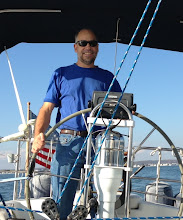One way a jury can infer that there was actual copying is to find 'access' to the infringed work. If there is no access, there is no copying. We maintained (and still do) that we never saw the registered Timberpeg plans. However, it is accepted legal theory that if a common third party - in our case Isbitski (the owner) - had access to the plans then the jury may, but not necessarily, find that the defendant had access. See page 12 of the jury instructions:
"You may impute access when there is evidence that a third party
with whom both the plaintiff and defendant were dealing had
possession of plaintiff's work and the plaintiff and defendant's
dealings took place concurrently."
Timberpeg claimed that access was proved by statements made by our previous attorneys in the case through these two letters: Letter #1 and Letter #2, because Isbitski brought early preliminary plans to our office and we looked at them, which the lawyers said in the letters. In my mind, however, it would be a stretch to say that the plans we saw early on were the registered plans.
Sunday, September 27, 2009
Subscribe to:
Post Comments (Atom)

No comments:
Post a Comment